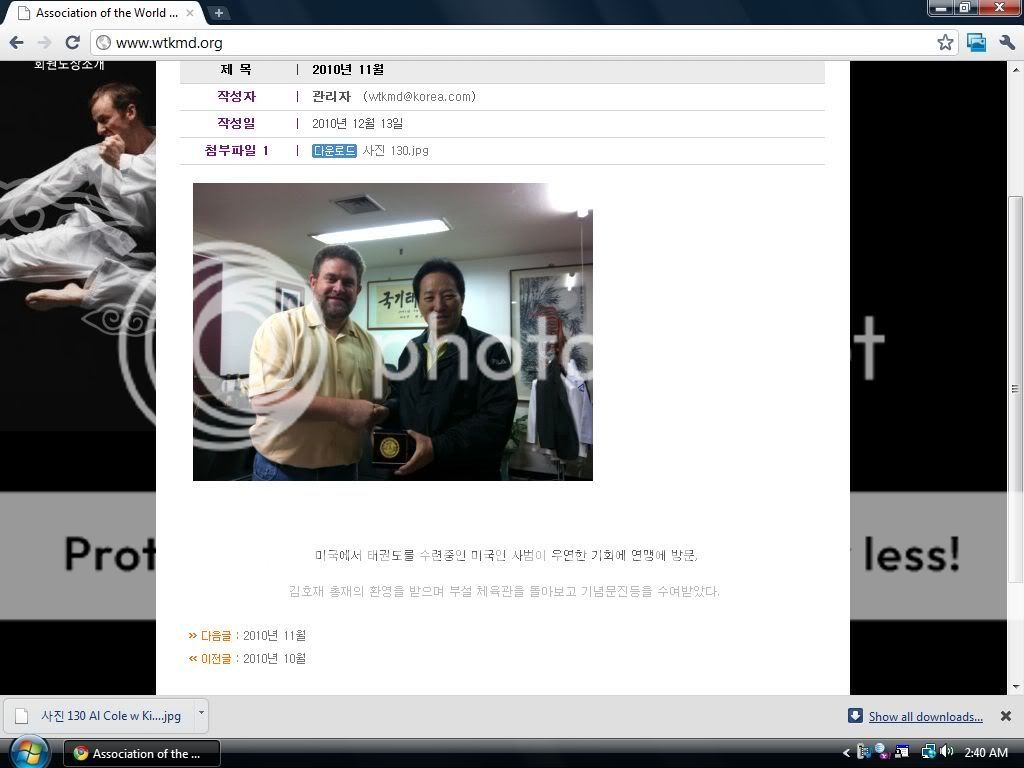mastercole
Master Black Belt
- Joined
- Apr 19, 2011
- Messages
- 1,157
- Reaction score
- 14
Yep: fight sense (timing? reading opponents?), power, agility and stamina are ALL going to increase one's chances of escaping unharmed in a self-defense situation.
These and those things that are only developed by hard, and constant full contact training like will power, fighting spirit, tenacity, killer instinct, etc. Without these elements that come from full contact training, of any type, hand to hand self defense capability is greatly diminished.
But "you fight like you train" proves true all too often.
And if a person does not train full contact, for years and years, when the self defense situation goes full contact - as most do - it's not going to go well for them, no matter what kind of martial theories they have been talking or reading about.
If you train to watch for and defend against only kicks to the head and face
Only kicks to the head and face? The mass majority of kicking in WTF matches are to the body, not to the head and face. Me being team leader for the US Taekwondo Team several times - I get to watch a lot of WTF matches ringside and I see a lot of kicking and punching to the body with the occasional attempt to kick the head and face. You must be thinking of some other martial art.
and only look for punches to come to the body you run the risk of developing habits that are bad for the the most likely self-defense scenarios.
The legal scoring area for a straight punch on the upper part of the WTF hogu is about 6" below the jaw. Many times WTF fighters are punched in the face, by accident, or on purpose. All the WTF fighter that I know of train to avoid and roll with ANY technique coming at their head and face, and I know some of the most elite WTF fighters in the world. Being knocked out by a face punch in a WTF match, even though illegal, takes you out of the competition, you lose. WTF fighters take it very serious. That said your average guy on the street can not punch that well, and his punch is usually easily avoided for most train fighters, of any style.
Odds are, you aren't going to be attacked with kicks. Odds are they are going to be punches (or a weapon swung) at the face.
And odds are the person doing the attacking is not going to have anywhere near the skill, timing, distance, will power, and technique of a trained fighter and will usually find himself in a very bad situation, having swung on a trained full contact fighter of any type. That said kicks are used in self defense encounters all the time, only second to hands, not third, forth, or fifth. So yes, one is likely to encounter some type of kicking in a self defense encounter.
Run in at a bar brawler with your hands dangling at your sides to rub chests is a bad idea — just like "turtling up" (a viable defense in Judo competition) is a bad idea anywhere except in a judo match.
If they did so, it would be done with the confidence that the other person did not have the skill it took to do any damage. Elite boxers do it to other elite boxers all the time while taunting them, sticking out the chin and laughing while completely dominating the other elite fighter, ultimately defeating him. Elite fighters can do a lot of things your average part time recreational martial arts guy should never do and probably would never dream of doing.




